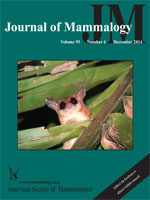Although raccoons (Procyon lotor) were originally categorized as solitary carnivores, recent evidence shows that some raccoons have overlapping home ranges, travel in groups, and share dens. Moreover, raccoons use communal latrines and scent mark, suggesting that chemical signals may be important for communication. Using a familiarization–discrimination technique we investigated whether raccoons can discriminate individual differences in the odors of conspecific urine or feces. The subjects were wild caught (n = 10 raccoons for urine experiments; n = 8 raccoons for feces experiments) and tested in a large outdoor enclosure. We demonstrated that raccoons can distinguish individual differences in the odor of unfamiliar and unrelated conspecific urine, but not in the odor of feces. Gas chromatography was also done on the urine samples to look for chemical differences. The gas chromatograms showed visible differences and qualitative as well as quantitative differences in chemical composition. This is the 1st study to determine that raccoons can distinguish individual differences in chemosensory cues. This opens the door to future research on the role of olfaction in raccoon social organization.
How to translate text using browser tools
1 December 2014
Evidence of individual odors and individual discrimination in the raccoon, Procyon lotor
Laura Kent,
Zuleyma Tang-Martínez
ACCESS THE FULL ARTICLE

Journal of Mammalogy
Vol. 95 • No. 6
December 2014
Vol. 95 • No. 6
December 2014
individual odors
odor discrimination
Procyon lotor
raccoon
urine




